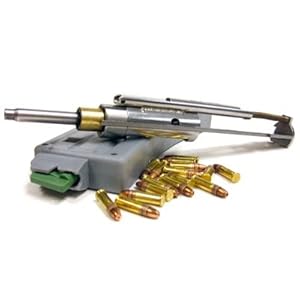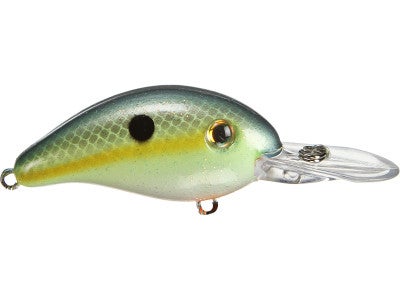Follow me on Facebook, YouTube, and Twitter!
Hopefully, some of you already read Part 1. Kinda tough to make it through to Part 2 if you don't make it past Part 1. Here are our steps:
Immediate- What you will have prepared and planned to survive for 24 hours.
Short Term-What you will have prepared and planned to survive for 72 hours.
Intermediate-What you will have prepared and planned to survive for up to 1 year.
Long Term-What you will have prepared and planned to survive for 1 year to 20 years.
End Game-What you will have prepared and planned to survive for 20+years.
Ok ok. So, if you are lazy, you can find
Part 1 here:
So, you made it through the first 24 hours. Now you have to get through the next 48 hours, making it 72 hours since you bugged out, hit the trail, dodged the big one...yadda yadda.
Like I stated in the first post, we have to keep this very generic, since every situation is going to be different. Either from the event in question, to where you live, to where you are going.
What did we face in the first 24 hours? How is it any different than the next 48? Why must you act differently. Well, simple enough, really. We have identified in my last couple of posts (specifically, in the new post regarding the 24hr bug out bag vs the Big Bad Bug Out Bag) that needs and goals are different between the two. In that first 24 hours, we are in pure fight and flight. Evade and escape, stealth and survival. You have 1 need in that first 24 hours, and that is to survive the current situation and get to a better one. That could be surviving the bare elements or external threats. Now, that better position doesn't have to be the end all be all. It doesn't have to be your Alamo. But it better be more tenable than what you are running from. And you can't be slowed down or dissuaded by any means, whether that is being stuck in traffic, being held up at gunpoint for your ride, or slowed down by a big heavy pack that is supposed to ensure your survival for the next 72 hours.
In that first 24 hours, you are only concerned with getting to this safer place and doing so before everyone else tries to do the same thing or you are caught up in whatever you are trying to leave . Lets consider a few broad situations. Now, if you live in Wyoming, for example, this won't really apply to you. If you have a fully stocked fall out shelter, this also won't apply to you. We will pick you guys back up on the 4th stage of preparedness. Let's make the assumption that you are like 80% of the people in the USA, and you are in or near a big city. You want to get out of there. Period. Again, this may not be so for EVERYONE.
1) Best Case Scenario- Let's say that you were wise, and you HAD that plan and you HAD your stuff ready to go, and you got out of Dodge, great. What now? In almost ALL cases, I'd guess 90% of the time, your plan should be to avoid people at all costs. I can't really think of ANY scenario where you would be running towards other people. Let's consider a few.
- Consider an invasion (since Red Dawn is a big hit). Now, most people are thinking that they would want to be protected by their military. Not me. Count me out. After all, the war (at least for the duration) will be between the two militarise. And, usually the military is going to be stationed somewhere they want to protect, which means there is something valuable worth protecting, which means it is a target. Yeah. No thanks. I don't know about you, but I would rather not be in the middle of a concentrated amount of military. Getting fragged by a bomb meant for other people isn't my way of going out. Even worse, I'd rather not become a prisoner if they win.
- Consider a biological weapon. Same thing applies. The more people around, the greater the chance of someone bringing it in to a refugee camp and spreading...whatever it is.
- Consider general mayhem brought on by an economic collapse. Face it, most people in this country can barely order a Big Mac at McDonalds, much less provide for themselves. People flock to where food is either dispensed by the government OR to areas where scavenging in plentiful. In a big group of people, the supplies will run out. Last thing I want is to either A) starve because there is no food B)Be half starved when I try and escape C)Have my own supplies and be worried about being trampled in a riot D)Become a meal. Face it. It has happened through out time. It would happen again.No, once again, I'd rather take my own chances.
- Consider a nuclear attack. Easy. Big cities make big targets. When the big cities are gone, little cities become targets too. Also, fallout and trade winds must be considered.
- Consider an EMP. Most people won't know why or how. In fact, they might just sit around waiting for the lights to come back on. When they don't, it will be just like the first 2 bullets listed above.
So, it's fairly obvious. Now, I only considered food, but people will be willing to take anything you got. In the latter case, if you were smart and had transportation that didn't have an electronic ignition....they might decide they want your only way out. But then again, if you got out early, you have nothing to worry about.
Ok. So you got out. What now? I guess that depends on your goals, skills, and plan. And, let's not forget, we are considering ONLY how to survive the next 72 hours. The next 48 hours is different from the first 24. How? Well, because you have some basic needs that are coming into play. You will need water. You will need food. You will need sleep. I am going to make the assumption that you have thought of all these, like I have, and your bag is equipped to accomplish each of these. So, that means finding a good area to lay low. It's that simple. It can be in the middle of the woods, an old factory, anything. As long as it's off the beaten path. Well off the path, if you can muster it.
Regardless what causes the "mega cull" as James Axler likes to call it (google it), the first 72 hours should be the worst part. That's when all the crazy stuff is likely to happen. So, stay away from people, banks, Wal-Marts, and big cities, and let the problems sort themselves out. After that 72 hours, all the looting, rioting, what have you, will be done.
What do you do during your time of waiting?
- For starters, keep a watchful eye for people. I know this sounds harsh, but you must treat any wayfaring soul as an enemy. People will get desperate to survive at all cost, namely by taking your stuff. People will revert to savages and see the lack of government as an opportunity to exercise their demons by killing, maiming or worse. There will surely be people out there that just want help, but you have to do for you and yours. Taking on a charity case is never in your best interests. Ever. Even if they have useful skills that you can use later, now it is not the time. In summation, be at a defensive alert at all times. If you have multiple people in your party, take shifts.
- Try and establish a good routine, even if it's only for this short 48 hours. In the military, they preach routines, even with small things such as shaving. It keeps morale up. Eat your meals at regular times. Give yourself things to look forward to, even if it's telling ghost stories each night over your small fire. If you have multiple people in your group, give them jobs
- Limit your movement. It's much easier to spot other people if you are still and stationary. Anyone that has hunted understands this. While I advocate walking a perimeter, keep it small. You want to also limit your exposure. Don't want some fool spotting you because you were out having a walk about and slipping up on you at night.
- Keep your energy high through eating regular meals and getting good sleep. Again, this goes back to your preparedness. We have assumed that you have items to accomplish this. So use them!
- Go over your goals and plans for the future. If you have people with you, talk about it. Find those holes in the logic. Modify it to be a better plan. Make sure everyone understands it.
2)Not so best case scenario-You have your things relatively in order, but you didn't get out early. Now you have to fight riots, looting, fear and panic. In this case, we have a couple of different scenarios. One being that your vehicle runs. The other is that an EMP has disabled.
Let's start with having a running vehicle. The number 1 thing that I wish to convey to you is: don't think so linear. That sounds ambiguous, and indeed it is because I mean many different things.
- You have been ingrained and indoctrinated with traffic laws. You don't have to obey them in this situation. You don't even have to drive on the road.
- Know where you are going and get there, by any means necessary. Even your family sedan can navigate on the shoulder, if it has to. Keep in mind that the last thing you want to do is get stuck in traffic where there are guard rails keeping you from getting off the road.
- Avoid going in a direction with large bridges over water, especially interstates (we have one in Alabama going over the Tennessee River). They will become clogged easily and will be among the first targets in a military action.
- Don't let anyone approach your vehicle. If you can, don't even slow down. If you need to pull over, for whatever reason, take the extra few seconds or minutes to find an isolated place.
- Know what parts of your vehicle to protect. For example, protect the front of you car, especially the radiator. A car can take an extreme amount of damage in most locations. That's one area that can't. And probably the biggest: Know how to change a tire.
- Speaking of, know how to make band aid solutions to car problems. Know how to make your pants belt act as an alternator belt. Know how to add water to your radiator. Understand that a vehicle can still operate with flat tires, and know the speed that you can still operate it.
- I will just say this: If you loose your vehicle, be prepared to get another one. After all, whatever your running from is surely worse than dealing with some poor soul who is also running from it. That may sound harsh, so if you can't accept that...learn how to hotwire a car. That sounds simple, I know. But cars aren't really that complex. It still takes just one wire to turn a starter, after all. Understand how steering wheel lock mechanisms work and how to defeat them. A BFH does wonders. You may not even have to do that. Don't assume that the keys aren't in every car you see. You might be surprised. It's amazing what 30 seconds of looking around may turn up.
- Going back to not thinking linearly, don't take the most direct route. Dont' even take the 2nd or 3rd. You may have to give up some precious minutes or hours vs a direct route, but if it keeps you from avoiding traffic, it will be worth it. Even if there is some traffic, back roads are easier to navigate around. You will have yards to drive through vs deep shoulders like you might find on an interstate.
What about the EMP scenario? While vehicles made pre-80 are getting very rare, understand which of them might still operate because they don't have electronic ignitions. Don't forget about other means over transportation, either, such as tractors, 4 wheelers, etc.
Now, if you do manage to procure said vehicle, understand that the reaction of others to you will be 10 fold as bad as we have so far expected. Don't be surprised with all-out assaults on you. So, keep one eye on the road ahead, and one eye looking for ways to avoid roadblocks at all times. Keep everyone low in the vehicle. Proceed with the plan you have put into motion. If you stop for rest, see #1 above.
What if you can't find a vehicle? You are treading on dangerous grounds. The best I can tell you is, enact your plan as best you can. Head the direction you need to go, keep an eye out for transportation. Stay off roads. Even staying 10 yards in the woods is adequate cover. The biggest problem you will face is that you probably won't be able to handle your big bug out bag. You will be back to just your 24 hour bag. So, scavenge and supplement as you go. Get on the steps from #1 above, but keep haste, as you have a long way to go on foot.
3)Worst case scenario-You don't have transportation. You don't have your gear together (or you were away from you home). Man. This is a tough one. There isn't much I can tell you other than to do as our favorite hero, Josey Wales, would say. Get plum mad dog mean.
- Locate protection. Start small and don't over think it. Right now, wherever you are...look around you. I am doing it right now. First thing I see is a 12'' piece of aluminum bar stock. That's a start. Upgrade as you go. Maybe you walk outside and find a piece of conduit that's a little better.
- Move at night, stay real secluded during the day in a very defensible location
- Never pass up an opportunity to eat. Eat on the run. After all, you can go a long time without eating, but your brain stops working so good.
- Stop frequently, sit and listen.
Again, broad strokes here. I haven't covered anything. I have barely scratched the surface. But what I hope to convey to you may just be a bit of knowledge you didn't already have. That's one of the main reasons I write and read. Every once in awhile, I learn a little bit.
What are the difference between the first 24 hours and the next 48 hours? How about the first 72 hours vs the Intermediate?
In the first 24 hours, you don't need food or water or sleep. You need protection and tools. In the next 48 hours, you need the protection and tools PLUS the water, food and sleep. This is about 50 pounds difference in necessities which must be taken into consideration. That first 24 hours is all about survival against elements at all cost. The next 48 hours are all about putting that plan into motion that will get you to your end game.
Specifically, what do I think you need for that first 72 hours? Well, for starters, go check out my bug out bag:
http://best5zach.blogspot.com/2012/08/whats-in-your-zombie-pack.html
http://best5zach.blogspot.com/2012/08/whats-in-your-zombie-pack-part-2.html
http://best5zach.blogspot.com/2012/11/initially-my-bug-out-bag-also-held-all.html
Essentially, I believe you need:
- basic first aid care+surgeon tools/staplegun/sutcher
- A 72 hour MRE kit
- 1 gallon of water
- personal protection
- tent/bedding
- your personal selection of tools (to include knifes/hatchets/etc)
- Method of starting a fire
- Dry, sealed clothing and PPE
The intermediate is different still, as we are either dealing with an incredible amount of foodstuffs that you either stored somewhere and are trying to get to (or stay with) or you must procure. Not necessarily a permanent food source such as farming quite yet. Up to a year, you can still scavenge fairly easily. Protection becomes a very real concern. We were talking about either using your portable shelter in the first 72 hours. That shelter won't hold up for a year. Nor will it offer you proper protection against the elements, in the long term. Squatting is a feasible solution, but every day you stay somewhere you weren't meant to be is one day someone else might decide to squat there too. You have to be moving on to a place to make your own. Intermediate stage may open up up to long term health concerns. A cold won't hinder you in 72 hours. Over a year, it can kill you. Same can me said for things we all take for granted: the flu, tetanus, snake bites.
In the intermediate stage, we begin thinking about more than tomorrow. But that's for another time.
The main things I want you take away from this are:
- Enact your plan as early as possible
- Stay away from others at all cost
- If you do have to deal with others, always assume they are hostile
- Open your mind and don't think so linearly
- Stay well fed. Thought processes go out the window real quick
- Remember that the first 72 hours is all about getting away from the threat, laying low, and staying physically and mentally sharp
Maybe a last thought. Never underestimate what you can and cannot do. Even the most complex things can be traced down to their simplest components, which can easily be conquered one at a time.





























